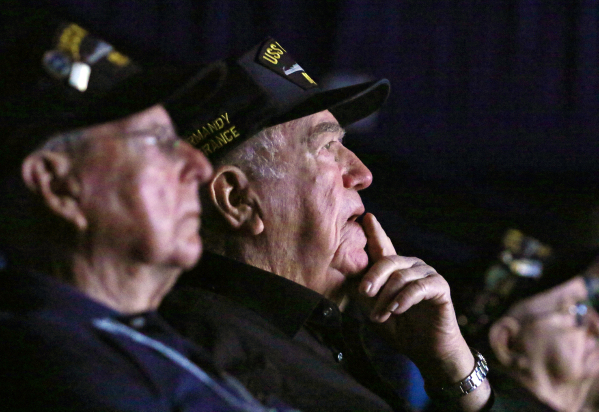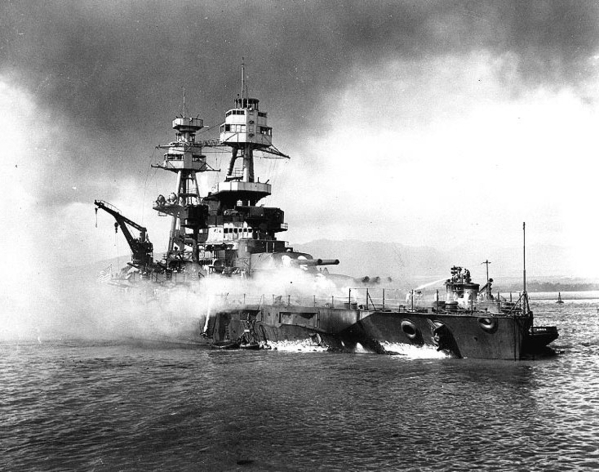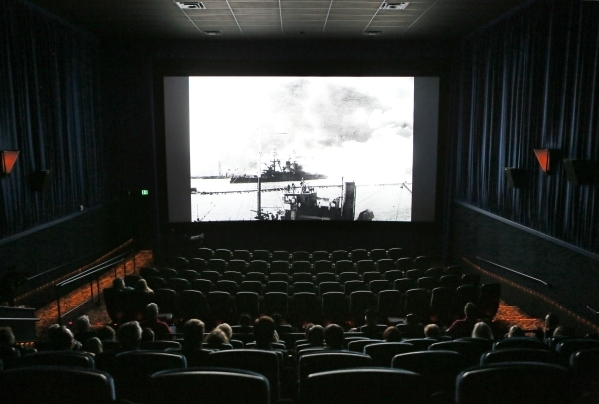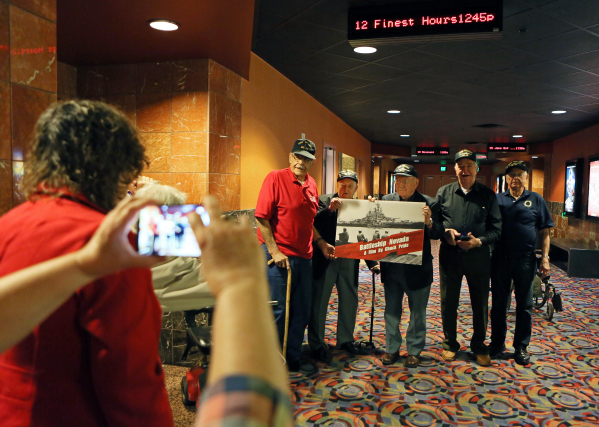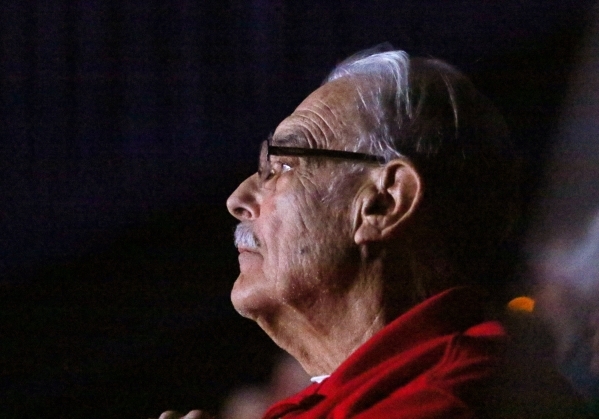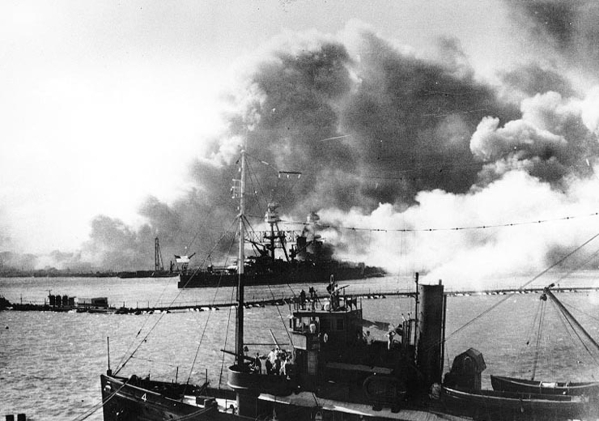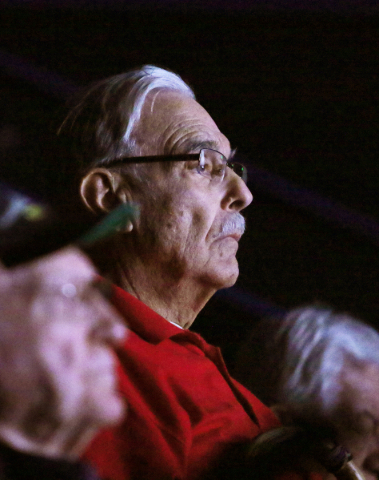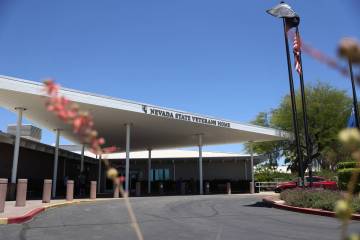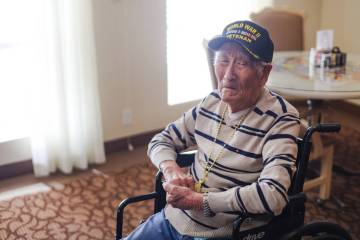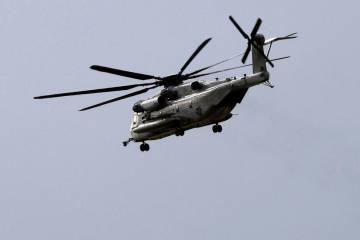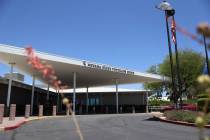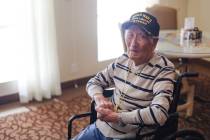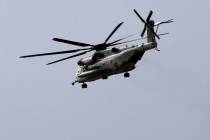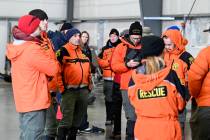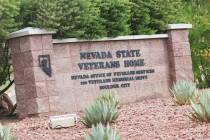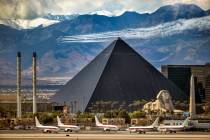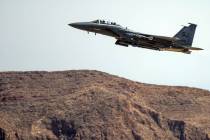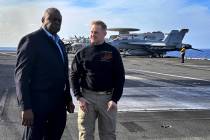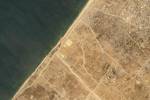Handful of USS Nevada shipmates reunite in Las Vegas
Flashbacks from when they fired 5-inch guns on the USS Nevada during the 1941 Pearl Harbor attack, the 1944 D-Day invasion of Normandy and the 1945 bombardment of Iwo Jima rolled through Byron McGinty's mind Monday while he watched a documentary on the legendary battleship with four of his shipmates.
After viewing the 35-minute film by Henderson Army veteran Chuck Pride, the 90-year-old McGinty, from San Diego, said he was lost for words about how he felt.
"I'm just too emotional inside over seeing the film," said McGinty, who had joined the Navy at age 17.
"We were aboard the ship at the time, but you don't know what's really going on," he said in a voice barely louder than a whisper.
"You're in your own little compartment ... and you're concentrating on performing your duty," he said. "You don't really understand a lot about what's going on outside."
Pride, a military historian hobbyist, made the film at his own expense to mark the 100th anniversary of the USS Nevada's commissioning on March 11, 1916. It was shown at the South Point's theater for the reunion of five men of "about a dozen" still living who served aboard Nevada's namesake battleship during World War II. The premiere showing kicks off a week of events in honor of the USS Nevada and its sailors.
Pride said he is working on plans to air the film on KLVX Channel 10 during the station's fundraising drive.
Big guns, big contributions
McGinty was humbled by watching the film, chock-full of original photos and footage of the battleship in action. "It makes me feel really good inside, a little small from all the things that went on, and that we contributed so little to the main outcome of the whole thing."
But history shows the Nevada and its crew, whose average age was 19½, made significant contributions to the victory in Europe and the defeat of Japan in the Pacific.
It endured damage from at least six bombs and a torpedo from Japanese warplanes that, according to Pride, killed 57 of its sailors and left 109 wounded on Dec. 7, 1941, at Pearl Harbor, on the then-Hawaiian territory island, Oahu. It was the only ship on Battleship Row to get underway during the attack.
It underwent temporary repairs at Pearl Harbor and then a major overhaul at Puget Sound Navy Yard. Then it sailed on to fight at Attu; led the offshore firepower assault in Operation Neptune for the Utah Beach landings during the D-Day invasion of Normandy, France; and was credited for knocking out 90 Nazi Germany tanks and 15 trucks.
The Nevada's 14-inch guns were then refitted with some recovered from the sunken USS Arizona and USS Oklahoma before it sailed to the South Pacific to soften the Marine landings at Iwo Jima. The ship endured kamikaze attacks then and during the Battle of Okinawa that killed 11 USS Nevada sailors.
Dick Ramsey, of Port St. Lucie, Fla., was 19 during the fire-support operation offshore of Iwo Jima. He remembers the Marines on board the USS Nevada who volunteered to go on the beach. Some were killed during a kamikaze attack.
"It was just another part of bad luck for the Marines who had volunteered to go," he said, recalling how he carried the body of one comrade killed during the March 27 suicide pilot attack from sick bay to the burial location.
It was 'a magical thing'
Cliff Burks, 90, of Dickinson, Texas, was a 5-inch gun pointer on the Nevada. "It was a magical thing," he said about serving on the ship that was his home with 1,400 sailors from November 1942 until December 1945.
He remembers what it was like at age 18 shelling the Normandy coast. "We spent 80 hours of shooting. I never was so hungry in my life," he said. "They sent us down a can of peaches to split among 13 people."
Les Putman, 91, of Menasha, Wisconsin, came aboard the Nevada in late 1942 as a 5-inch gun pointer. He remembers all the battles after that but, like Burks, "the one where we really got stressed out more than any of the others was Normandy because we were at our battle station for 80 hours. I sat on the left side of the mount," he said.
Ansel Tupper, 88, of Cheboygan, Wisconsin, served in the ship's navigation office from 1945 to 1947. He said the film was "unbelievable" because it spanned the entire life of the battleship from its brief role in World War I as the first U.S. Navy ship with triple gun turrets and an oil-fired steam power plant to its impervious feat of remaining afloat as a target ship during two atomic bomb tests for Operation Crossroads in 1946 off the Bikini atoll.
"It wasn't painted red, it was painted orange," Tupper recalled.
Contaminated by radioactive spray from the atomic blasts, one air-dropped and the other underwater, the ship was decommissioned in August 1946, only to be used as a gunnery target two years later.
He said he cried when the Nevada was finally sunk by a torpedo in 1948, 65 miles southwest of Oahu.
"It was sad because it was your home," Tucker said.
Contact Keith Rogers at krogers@reviewjournal.com or 702-383-0308. Find him on Twitter: @KeithRogers2



